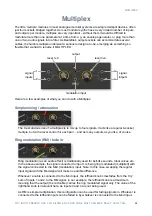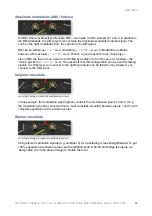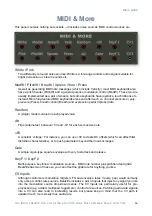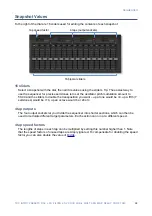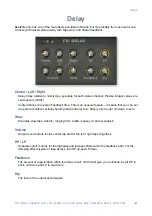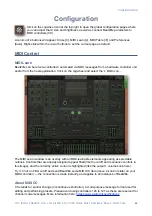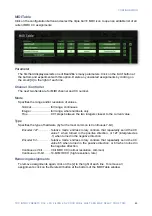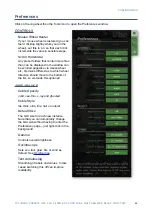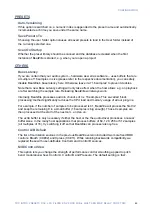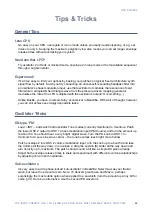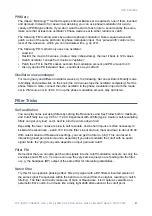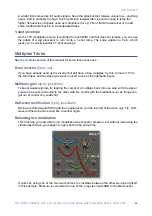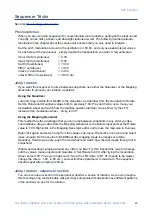
TIPS & TRICKS
PWM etc
The classic ‘Minimoog™’ method requires both oscillators set to sawtooth, one of them inverted
and detuned. Instead of (or as well as) detuning, you can use phase modulation for a wide
variety of PWM-type effects. If you don’t want the start of each note to sound exactly the same,
make sure that at least one oscillator’s Phase mode is set to either
random
or
catch
.
The following ‘FM’ method works by audio-rate phase modulation: Take a square wave and
patch a sine of the same pitch into its phase modulation input. Your ‘pulse width’ control is the
level of the sine wave, which you can modulate with e.g. an LFO.
The following ‘PD’ method only uses one oscillator:
• Load
init
• Restrict the m
ap
to 64 values, create a ramp (/shape/ramp), then set it back to 128 values.
• Switch oscillator 1 shape from
Cosine
to
TapMap1
• Patch the LFO to the PD socket, set both the modulation amount and PD amount to 40
• Also try
2pulse
PD instead of
Saw
– sounds like a sync effect!
Oscillator as waveshaper
For more gnarly and different oscillator waves, try the following: Set an oscillator’s Modify mode
to
Multiply
and double-click on the knob (the 0.00 value stops the oscillator completely). Set the
phase mode to
Gate
, connect the other oscillator to the phase modulation input with the mode
set to
PM course
or
Lin 1kHz.
Turn up the phase modulation amount, play and listen...
Filter Tricks
Self-oscillation
You can play notes just using filters by setting the Resonance and Key Follow both to maximum,
and Cutoff fairly low e.g. 0.00 or +12.00. Experiment with all filter types. Caution: self-resonating
filters can get very loud, so it’s best to turn the volume down first!
Especially the lower notes are slow to self-resonate, and a short impulse is often necessary to
kickstart the resonance – patch +5V into the filter’s input and turn the Gain down to about 30.00.
With careful Gain and Resonance settings, you can get the filter to ‘ping’. This can result in
interesting tuned percussion sounds, especially if you also modulate the cutoff with an audio
signal. Note: the ‘ping’ decay also depends on input gain and cutoff.
Filter FM
Remember that you can also patch audio signals into the cutoff modulation sockets, not only the
envelopes and LFO etc.. You can even use the very same signal you are feeding into the filter,
or e.g. the bandpass (BP) output of the same filter for interesting instabilities…
Notch filter
Try this for a polyphonic phasing effect: Mix a dry signal with a BP-filtered, inverted version of
the same signal. Frequencies within the band are removed from the original, resulting in ‘notch
filtering’’. The filter can't really make use of Gain or Resonance, it isn’t quite as versatile as a
parametric EQ's notch, but it looks like a fairly tight 24db attenuation at the cutoff point.
47


